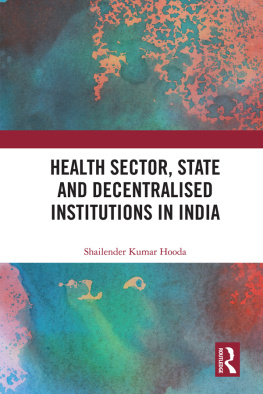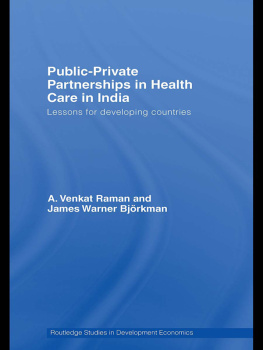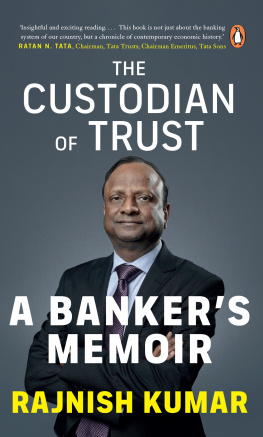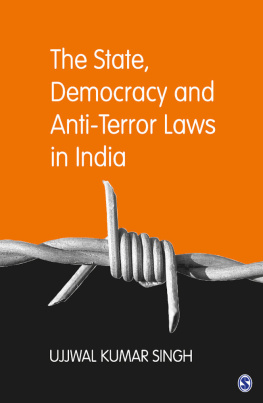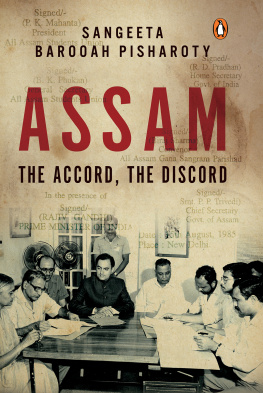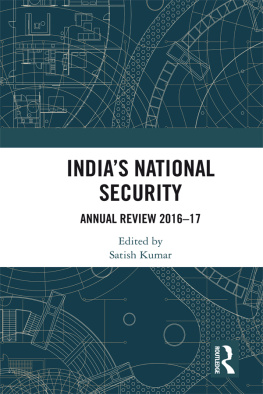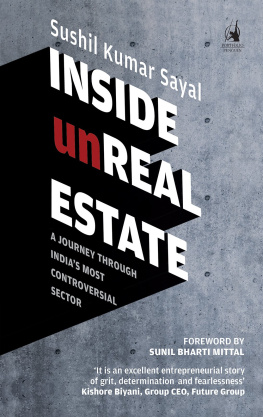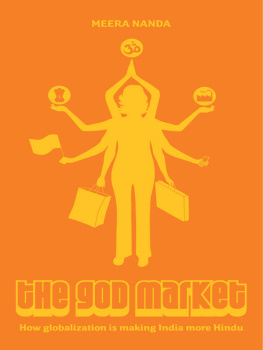Health Sector, State and Decentralised Institutions in India
This book describes the transition in the Indian healthcare system since independence and contributes to the ongoing debate within development and institutional economics on the approaches towards reform in the public health system. The institutional reform perspective focuses on examining the effective utilisation of allotted resources and improvements in delivery through decentralisation in governance by ensuring higher participation of elected governments and local communities in politics, policy making and delivery of health services. It discusses the economic (resource) reforms to explain the relevance and expansion of state interventionism, along with its influence on the health sector, accountability and allocative efficiency. It also explores the connections between neoliberal thought that promote privatisation and insurance-based financing in the health sector, and its implications for health service access and delivery. The book offers ways to address long-standing systemic and structural problems that confront the Indian healthcare system.
Based on large-scale surveys and diverse empirical data on the Indian economy, this book will be of great interest to researchers, students and teachers of health economics, governance and institutional economics, political economy, sociology, public policy, regional studies and development studies. It will also be useful to policy makers, health economists, social scientists, public health experts and professionals, and government and non-governmental institutions.
Shailender Kumar Hooda is Associate Professor at the Institute for Studies in Industrial Development, New Delhi, India. He completed PhD in Economics from Jawaharlal Nehru University, New Delhi. He has more than a decade of teaching and research experience. Previously, he taught at the University of Delhi and Maharshi Dayanand University, Rohtak, and he has worked with the National Council of Applied Economic Research and the National Institute of Public Finance and Policy, New Delhi. He works on the political economy of health and healthcare, health economics, financing and policy, governance and decentralisation in health, medical device and pharmaceutical industry, institutional economics and applied econometrics. He specialises in handling large-scale survey data relating to the Indian economy, and in conducting and designing primary surveys. His writings have appeared in magazines, newspapers and reputed journals. He has delivered several projects funded by national and international agencies.
First published 2022
by Routledge
2 Park Square, Milton Park, Abingdon, Oxon OX14 4RN
and by Routledge
605 Third Avenue, New York, NY 10158
Routledge is an imprint of the Taylor & Francis Group, an informa business
2022 Shailender Kumar Hooda
The right of Shailender Kumar Hooda to be identified as author of this work has been asserted by him in accordance with sections 77 and 78 of the Copyright, Designs and Patents Act 1988.
All rights reserved. No part of this book may be reprinted or reproduced or utilised in any form or by any electronic, mechanical, or other means, now known or hereafter invented, including photocopying and recording, or in any information storage or retrieval system, without permission in writing from the publishers.
Disclaimer: Every effort has been made to contact owners of copyright regarding the material reproduced in this book. Perceived omissions if brought to notice will be rectified in future printing.
Trademark notice: Product or corporate names may be trademarks or registered trademarks, and are used only for identification and explanation without intent to infringe.
British Library Cataloguing-in-Publication Data
A catalogue record for this book is available from the British Library
Library of Congress Cataloging-in-Publication Data
A catalog record for this book has been requested
ISBN: 978-0-8153-6101-5 (hbk)
ISBN: 978-1-032-10844-5 (pbk)
ISBN: 978-1-032-10843-8 (ebk)
DOI: 10.4324/9781032108438
Typeset in Sabon
by Apex CoVantage, LLC
Dedicated to my late father (Shri Balraj) and mother (Smt. Ramrati Devi) for their support and unconditional love
Contents
PART 1
The state as a provider of healthcare services
2 Investing in health: health policies and expenditure priorities
3 Rejuvenating the public system: efficiency in resource allocation
PART 2
Institutional reforms: decentralisation in service delivery
4 Politicising the reprioritisation of health expenditures
5 Decentralisation in health: rationale, measurements and effectiveness
6 Decentralisation, access and service delivery
PART 3
New financing and policy paradigms: redefining the role of state
7 Towards privatising healthcare: at what cost?
8 Changing nature of healthcare financing: who benefits?
- Part 1 The state as a provider of healthcare services
- 2 Investing in health: health policies and expenditure priorities
- 3 Rejuvenating the public system: efficiency in resource allocation
- Part 2 Institutional reforms: decentralisation in service delivery
- 4 Politicising the reprioritisation of health expenditures
- 5 Decentralisation in health: rationale, measurements and effectiveness
- 6 Decentralisation, access and service delivery
- Part 3 New financing and policy paradigms: redefining the role of state
- 7 Towards privatising healthcare: at what cost?
- 8 Changing nature of healthcare financing: who benefits?
Guide
Figures
2.1 Distribution of current health expenditure by sources: 20152016
2.2 State-level resource requirements vs. actual spending on health
2.3 Trends in central and state government expenditures on health under policy changes scenario
2.4 Healthcare spending of states during two National Health Policy years
3.1 Public health system contribution in service delivery
3.2 Trends in health expenditure as percentage of GSDP and in per capita terms: pre- and post-NRHM analysis
3.3 Changing patterns of central transfer to states in health: pre- and post-NRHM analysis
3.4 Number of days taken to credit central share in SHS account: 20152016
5.1 Extent of decentralisation in India across states: 2006
5.2 Nature of devolution of 3Fs powers to PRIs across states: 2006
5.3 Progress in rural and urban infant mortality rates across states of India
5.4 Association between extent of decentralisation and rural IMR, 20052006
5.5 Association between index of decentralisation and rural IMR, 20122015 at major states level
6.1 Involvement and intervention of VHSC and GS in health: India and Haryana
6.2 Involvement and intervention of VHSC and GS in health: a comparison between states
6.3 Status of involvement of Panchayat in core, welfare, economic and health functions in sample districts
6.4 Status of Panchayat involvement in core, welfare, economic and health functions by Sarpanch background
6.5 Status of utilisation of health facilities for MCH care in pre- and post-decentralised initiative phase, 19922018
6.6 Progress in institutional delivery: declining gap between rural-urban and states
6.7 Decentralisation and child immunisation status

